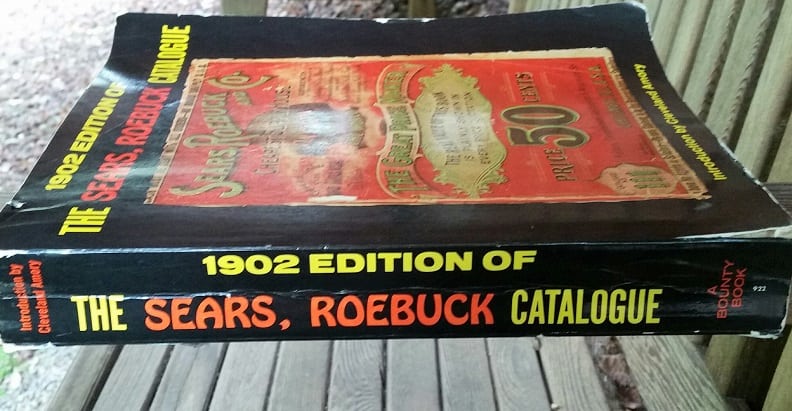How much research is enough? Writers of historical fiction know the dilemma well. We fall in love with our characters and want to know them as intimately as we can. What did their environment look like, smell like, feel like? What did they eat, wear, have in their homes? What were the tools of their trade, how did they conduct business, spend leisure time, celebrate holidays, doctor themselves and their families?
Researching my historical novel The River by Starlight involved six cross-country trips. Close to 100 books and numerous notebooks bulging with documents and newspaper clippings cram a seven-foot bookcase in my office. But as delightful karma would have it, the book I consulted more than any other, the one I dog-eared with use, cost me all of $1.50.

I found the 1902 Sears Catalogue on a lonely back table at a used book sale. As much an anthropology lesson as any textbook, author Cleveland Amory called it “a view of the American scene at the turn of the century with an excitement and accuracy that would defy the most eminent historian.”
“THE REAL VALUE OF THIS BOOK IS PLAINLY SHOWN IN EVERY PRICE QUOTATION” blares the front cover. From the Sears catalogue I learned what everything from thimbles to pianos cost, what they looked like, how many choices there were. What men, women and children wore in every imaginable situation, what size range was available (“Fat men usually experience much difficulty getting a shirt in the right shape.”). How credit worked. How it all reflected the larger economic picture of the country.
Details from the catalogue colored my descriptions of home furnishings, tools and weapons, toiletries and potions. Stoves and washing machines, hay loaders and hobby horses, paint and fabric colors. I acquired some rusty artifacts of homestead life and was able to see what they looked originally.
I wrote a frisky scene giving an intimate look at the layers of societally-required undergarments my female lead, Annie, dares to forego on a sweltering summer day. There’s a charged scene wherein you can all but smell the “overpowering cloud of Le Muguet” enveloping the town’s queen busybody. A gorgeous tortoise shell hair comb becomes an heirloom and a pair of “ugly cloth-top lace-ups” leads to disaster. We see and feel the fabrics used in a prostitute’s costume, a child’s nightgown, a wedding quilt, a funeral shroud, the garish handkerchief of the queen snoop’s informant . . .
Continue reading the full post at READING THE PAST

Leave A Comment